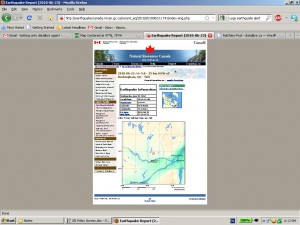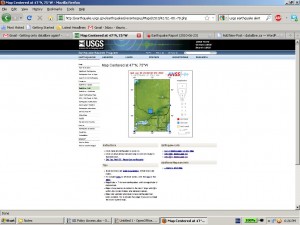A surprise announcement was made by Statistics Canada that the long form of the Population Census is no longer obligatory. These are questions that have been asked for the last 7 Censuses and suddenly without notice or evidence to support the decision, these will not be part of the 2011 Census. This was not an issue discussed or on the table during Statistics Canada’s Census public consultations.
Insiders tell me that Statistics Canada did not approve of this change and was ordered to do so by The Harper Government.
This has very serious implications for those who monitor social indicators and use these data to inform policy on: immigration, ethnicity, visible minorities, education, labour, culture, religion, linguistics, income, women, transportation, commuting, unpaid work, housing and etc. in Canada.
The long form will become a voluntary National Household Survey (NHS), conducted 4 weeks after the census disseminated to a much smaller sample size. This will affect any kind of longitudinal research as it will no be backward compatible with previous Censuses.
I have contacted StatCan to find reports or studies that would have provided the evidence to support such a radical decision. I have also contacted the offices of the Information Commissioner, Privacy Commissioner. I think I will now contact my MP, opposition parties and so on. Here is Canada Gazetter Order in Council that approved the 2011 Population Census. It is not that informative as there is no context as to why the long form is not included.
Below are media on the issue. I will capture PDFs of these articles.
CBC: Tories scrap mandatory long census – Move could affect amount of detailed information obtained
Bender would not comment, however, on how the change might affect the data in terms of whether respondents of a certain socio-economic or ethno-cultural background might be more or less inclined to answer the longer survey.
Peter Morrison, assistant chief statistician responsible for the census, said that he knows of no other country that has made a similar move. He would not confirm that the idea was not one proposed by Statistics Canada, nor would he or Bender address whether the move is something statisticians agree with.
“Our role is to execute the decision that was made [by the government],” he said, adding that he is optimistic it can be a success.
Globe and Mail: Tories scrap mandatory long-form census – StatsCan says quality of data will suffer.
“What we can tell you is that the data we will release will be of quality, but we do acknowledge that we may not get the same level of detail as that of a census,” said Rosemary Bender, director-general of the agency’s census, social and demographic statistics branch.
“This is something we’ll be monitoring closely.”
Insiders who spoke to The Canadian Press on condition of anonymity decry a new world order within the agency since the Conservatives came to power in 2006 and legendary chief statistician Ivan Fellegi retired.
Montreal Gazette: Census restrictions hurt historians Feds cite privacy. Genealogists slams new rules protecting data.
The idea of doing away with the long census questionnaire form, transferring the questions to the NHS and no longer releasing the information did not become public until Saturday, when it appeared in a government publication.
,,,
The decision to change the census came from the federal government and not from the ministry or Statistics Canada, he said.
Toronto Star: Tories eliminate compulsory long census form
The federal government is scrapping the mandatory long census form in favour of a voluntary survey — a move some critics blame on a Conservative campaign to slash analytical work done by Statistics Canada.
For the first time in 35 years, the census will not feature a detailed, long form that Canadians are obliged to send back to the government.
Ottawa Citizen:Genealogists slam new restrictions on census information.
A door to Canada’s past has slammed shut, leaving future Canadians with very little information about their own families and the country’s history, in a move the government says was prompted by privacy concerns.
Statistics Canada has quietly made major changes to the country’s census in time for the upcoming round of national sampling in 2011. The long census questionnaire that provided information on a broad range on such topics as ethnicity, education, employment, income, housing and disability has been eliminated. Instead, those questions will be asked on a new, voluntary National Household Survey (NHS) and the results will never be released, in contrast with the treasure trove of census data that currently becomes public after 92 years.
Cyberpresse: Recensement: le formulaire détaillé obligatoire éliminé
Le gouvernement fédéral a décidé d’éliminer le formulaire détaillé de recensement obligatoire au profit d’une enquête à participation volontaire, une décision que certains observateurs imputent à une campagne conservatrice menée afin que soit réduit le travail d’analyse fait par Statistique Canada.
Edmonton Journal: Restrictions on census information criticized
Officials from Statistics Canada say the 2011 census went through the usual consultation process, with citizens invited to provide feedback online. The idea of doing away with the long census questionnaire form and no longer releasing the information did not become public until Saturday.


Comments on Posts